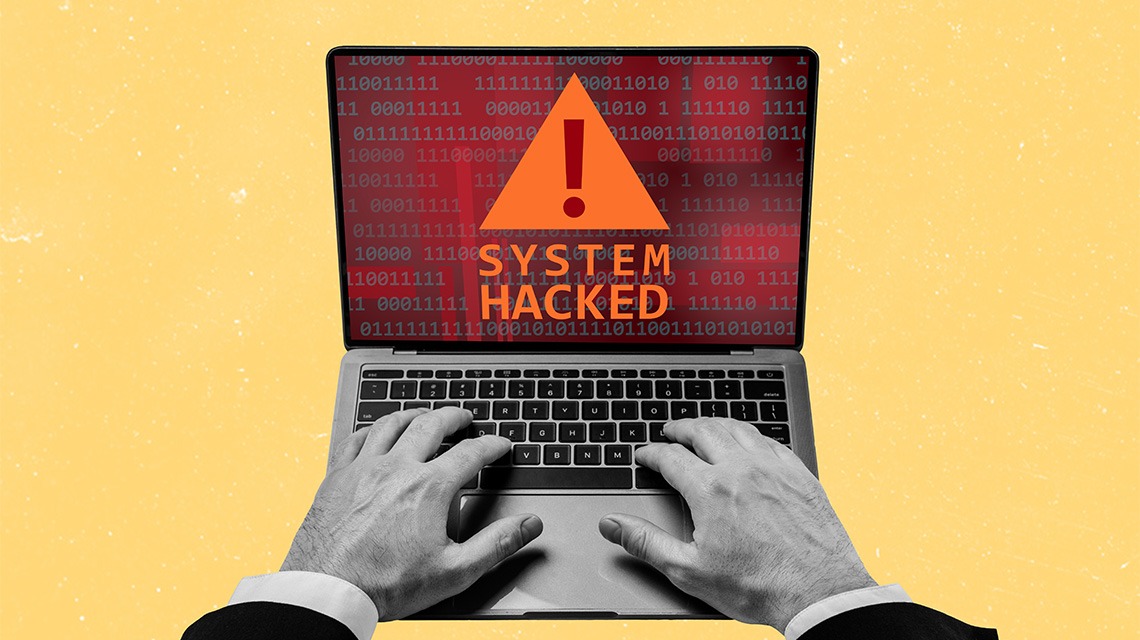Smart technology makes our lives easier. But it also presents data security challenges.
As our homes and workplaces become more connected, the importance of data security grows. Smart devices, from thermostats to personal assistants, collect vast amounts of data. This data can be sensitive, including personal information and daily habits. Ensuring this information remains secure is crucial.
Without proper security measures, hackers can access and misuse your data. This introduction will explore the essential aspects of data security in smart technology. We will discuss why it matters and what steps you can take to protect your information. Understanding these basics can help you use smart technology safely and with confidence.

Credit: www.igi-global.com
Introduction To Data Security
Smart technology is everywhere. It’s in our homes, offices, and even cars. With this convenience comes a need for data security. Protecting personal information is more crucial than ever. Data security ensures our information remains private. It stops unauthorized access and data misuse.
Understanding data security helps us stay safe. It involves protecting data stored on devices. This means safeguarding both physical and digital information. Keeping data secure is not just for tech experts. Everyone benefits from learning about it.
Importance Of Data Security
Data breaches can be costly. They can lead to financial losses and identity theft. Securing data builds trust with users. People feel safe using smart devices. Businesses gain a competitive edge by ensuring data safety. Data security is vital for maintaining privacy.
Protecting data helps in avoiding legal issues. It ensures compliance with regulations. This is important for companies handling sensitive information. Data security safeguards the reputation of businesses. It also protects personal data from being exploited.
Challenges In Smart Technology
Smart devices collect vast amounts of data. Managing this data is challenging. Hackers target these devices for data theft. Many devices have weak security measures. This makes them vulnerable to attacks.
Constant updates are needed to improve security. Not all users update their devices regularly. This leaves them exposed to threats. Interconnectivity of devices also poses risks. A breach in one device can affect others.
Ensuring data security in smart technology is complex. It requires attention and regular monitoring. Educating users about these challenges is essential.

Credit: www.smartmeetings.com
Common Threats
Data security in smart technology faces threats like hacking, data breaches, and malware. These risks can compromise personal information. Protecting devices with strong passwords and regular updates is essential.
In today’s digital age, smart technology is everywhere. From smartphones to smart homes, we rely on these devices more than ever. However, this convenience comes with its own set of challenges. One of the most significant concerns is data security. Let’s look at some common threats that can compromise your data security in smart technology.
Cyber Attacks
Cyber attacks are a major threat to smart technology. Hackers use various methods to gain unauthorized access to your devices. They can install malware that tracks your activities or steals your personal information.
Imagine waking up to find your bank account emptied because a hacker accessed your financial apps. It’s a scary thought, but it’s a reality for many.
Stay vigilant. Use strong passwords and update your software regularly. These small steps can make a big difference in protecting your data.
Data Breaches
Data breaches are another common threat. These occur when sensitive information is accessed without permission. For example, a company you trust could have its data hacked, exposing your personal details.
Think about the last time you shared your email or phone number with an online service. What if that information was leaked? It’s not just inconvenient—it can lead to identity theft.
Always check the security measures of the services you use. Opt for companies with strong data protection policies. And be mindful of the data you share online.
By understanding these common threats, you can take proactive steps to safeguard your data. What measures do you take to protect your smart devices?
Data Encryption Techniques
Smart technology relies on data encryption to keep information safe. Techniques like AES and RSA ensure secure communication. These methods protect sensitive data from unauthorized access, enhancing overall data security.
In the age of smart technology, data security is a pressing concern. One of the most effective ways to safeguard your data is through encryption. Data encryption transforms readable data into coded text, ensuring only authorized parties can access it. But how does encryption work, and what techniques are used to keep your information safe?
Symmetric Encryption
Symmetric encryption uses a single key for both encryption and decryption. Imagine having one key to lock and unlock your diary. This method is fast and efficient, making it ideal for large volumes of data.
However, the challenge lies in securely sharing the key. If someone else gets hold of it, your data could be at risk. Have you ever shared a password with a friend and then worried about them passing it on? That’s a similar concern with symmetric encryption.
Asymmetric Encryption
Asymmetric encryption involves two keys: a public key and a private key. The public key encrypts data, while the private key decrypts it. Think of it like a mailbox where anyone can drop a letter using the public key, but only you can read it with your private key.
This technique is more secure for key distribution. However, it’s slower than symmetric encryption, which might not be ideal for all scenarios. But when security is a top priority, this method shines.
How do you balance speed and security in your digital life? Understanding these encryption techniques might just be the first step in making informed choices.
Authentication Methods
Smart technology has transformed our daily lives. With this transformation comes the need for robust data security. One of the key aspects of data security is authentication methods. These methods ensure that only authorized users access sensitive information. Different authentication methods provide varying levels of security. Understanding these methods is crucial for protecting your data.
Multi-factor Authentication
Multi-Factor Authentication (MFA) enhances security by requiring multiple verification steps. It combines two or more credentials from different categories. These categories include something you know, have, or are. This approach makes it harder for unauthorized users to gain access. Even if one factor is compromised, others provide a safety net. MFA is a strong defense against unauthorized access.
Biometric Authentication
Biometric Authentication uses unique physical traits for verification. Fingerprints, facial recognition, and voice patterns are common examples. These traits are difficult to replicate, adding a layer of security. Biometric data offers convenience, as users do not need to remember passwords. This method is widely used in smartphones and other smart devices. It provides both security and ease of use.
Privacy Regulations
Data security in smart technology is vital. Privacy regulations play a key role in protecting user information. These laws ensure companies handle personal data responsibly. GDPR and CCPA are two major privacy regulations. They set standards and guidelines for data protection.
Gdpr
The General Data Protection Regulation (GDPR) applies in Europe. It protects personal data by setting strict rules. Companies must get consent before collecting personal information. GDPR also requires them to inform users about data usage. It mandates that users have access to their data. They can request corrections or deletions. GDPR fines companies that violate these rules.
Ccpa
The California Consumer Privacy Act (CCPA) is a U.S. regulation. It gives California residents control over their data. Companies must disclose data collection practices. Users can opt-out of data sales. CCPA empowers consumers to know what data is collected. They can ask for deletion of their personal information. Non-compliance can lead to hefty penalties.
Smart Technology Vulnerabilities
Smart technology often faces security risks. Personal data can be easily accessed by hackers. Strong security measures are essential.
Smart technology has become an integral part of our daily lives, bringing convenience and efficiency. However, with this connectivity comes vulnerabilities that pose significant risks to data security. Understanding these vulnerabilities is crucial as they can affect not only your personal privacy but also the security of larger networks and systems.
Iot Devices
Internet of Things (IoT) devices are everywhere, from smart thermostats to connected refrigerators. These devices often lack robust security measures, making them attractive targets for hackers. Imagine your smart speaker being used as a gateway to access your entire home network.
Most IoT devices are designed for ease of use, not security. They come with default settings that are rarely changed by users. This oversight can lead to unauthorized access if these settings are not updated.
You might be wondering, how can you protect your IoT devices? Start by changing default passwords and regularly updating firmware. Consider setting up a separate network for your IoT devices. This way, even if one device is compromised, your main network remains secure.
Wearable Technology
Wearable technology, like fitness trackers and smartwatches, collects a wealth of personal data. This data includes health metrics and location information. If intercepted, this data can be misused in numerous ways.
Wearables often sync with your smartphone or other devices, which can create additional security risks. A vulnerability in one device can potentially expose data across all connected devices.
To safeguard your data, ensure that your wearables are always updated with the latest software. Be cautious about the apps you install and the permissions you grant. Ask yourself, does a fitness app really need access to your contacts or location?
Data security in smart technology is a growing concern that requires your attention. By being proactive and informed, you can mitigate risks and enjoy the benefits of smart technology without compromising your privacy. What steps will you take today to enhance your data security?
Best Practices For Data Security
Data security in smart technology is crucial in today’s digital era. Protecting sensitive information requires implementing best practices for data security. These practices help safeguard personal and business data from potential threats. By following these practices, you can ensure a secure and safe digital environment.
Regular Software Updates
Software updates are vital for maintaining data security. They patch vulnerabilities and improve overall system performance. Regular updates protect against malware and other security threats. Set devices to update automatically to avoid missing important updates. This simple step can prevent unauthorized access to your data.
Strong Password Policies
Strong passwords are essential for data protection. Use a mix of letters, numbers, and symbols for secure passwords. Avoid using easily guessable information like birth dates or common words. Change passwords regularly to enhance security. Consider using a password manager to store and generate strong passwords. This practice reduces the risk of data breaches.

Credit: www.sealpath.com
Future Trends
Smart technology continues to evolve rapidly. Data security remains a top concern. Innovations are shaping the future of data protection. New trends are emerging to enhance privacy. Let’s explore some key advancements.
Ai In Data Security
Artificial intelligence plays a crucial role in data security. AI algorithms detect threats faster than humans. They analyze vast amounts of data efficiently. AI can identify patterns indicating potential breaches. This early detection helps prevent data loss.
AI adapts to new threats quickly. It learns from past incidents. This continuous learning strengthens security systems. AI-driven solutions offer real-time monitoring. They provide quick responses to any suspicious activity.
Blockchain For Privacy
Blockchain technology enhances data privacy. It offers a decentralized approach to data storage. Information is stored in blocks across multiple servers. This makes data tampering difficult. Each block has a unique cryptographic signature.
Blockchain ensures transparency and integrity. Users can track data access history. This system reduces unauthorized data access. It provides users with more control over their information. Blockchain’s security features are promising for future applications.
Frequently Asked Questions
What Are The 3 Types Of Data Security?
The three types of data security are network security, endpoint security, and data encryption. Network security protects data during transmission. Endpoint security secures devices accessing networks. Data encryption converts data into a secure format, protecting it from unauthorized access.
What Is Data Security In Technology?
Data security in technology involves protecting digital information from unauthorized access, theft, and corruption. It ensures confidentiality, integrity, and availability of data.
What Are The Four 4 Elements Of Data Security?
The four elements of data security are confidentiality, integrity, availability, and non-repudiation. Confidentiality ensures data is accessible only to authorized users. Integrity safeguards accuracy and reliability. Availability guarantees timely access. Non-repudiation prevents denial of actions or data changes, ensuring accountability.
These elements collectively protect sensitive information.
What Is Data Security In Artificial Intelligence?
Data security in artificial intelligence protects sensitive information from unauthorized access. It ensures the integrity and confidentiality of data. Techniques include encryption, access control, and anonymization.
Conclusion
Smart technology improves our lives but raises data security concerns. Protecting personal data is vital. Simple measures can enhance security. Use strong passwords and update devices regularly. Be cautious with data-sharing apps. Educate yourself about privacy settings. Trust only reputable brands with your data.
Awareness and responsibility are key. Stay informed about the latest security threats. Embrace smart technology, but prioritize safety. This balance ensures a secure digital future. Remember, technology serves us best when we use it wisely.










